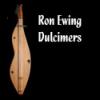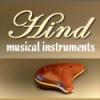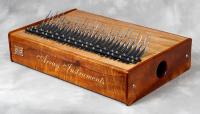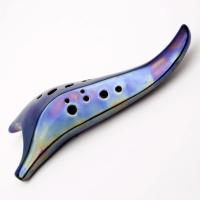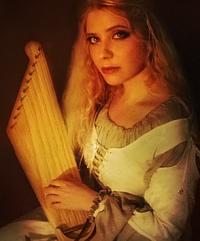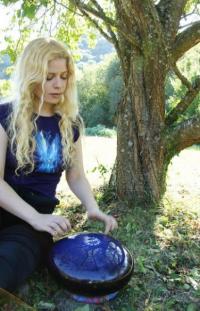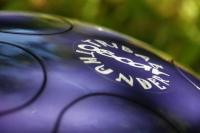Search in CMI:

Above: Johathan Wilson playing his "Guitar Viol" or bowed guitar that you can purchase at Togaman Guitars
Above: Impromptu on Guitar Viol and improvisation by the maker himself. You can see more videos in his official channel youtube channel
A bit of history about the bowed guitar
Jimmy Page. Sigur Ros. Julio Revueltas. These are just a few contemporary examples of modern electric guitar players who are noted for weilding a bow to the guitar. The fact is, however, that "guitar bowing" has been going on for centuries. Bowed guitars have their predecessors in the early instrument called "Viol" also known as Viola de Gamba, however, by the 1700's, these heavenly sounding bowed string instruments all but died off due to the modern violin family's greater volume and ability to fill a concert hall with sound.
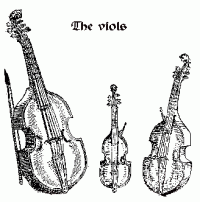
There was a six string instrument with frets and tuning like the guitar but bowed like a cello called the Arpeggione invented in 1823 by the Viennese guitar maker Johan Georg Staufer. Franz Schubert wrote a fine sonata for it. Today, Schubert's "Arpeggione Sonata" is commonly played on the Cello
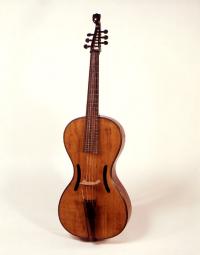
Above: Arpeggione
As we know guitars the bridge of the guitar is flat and traditionally flat string plane will not allow for effective bowing. I know this.. and if you're thinking about tuning your guitar and add a viola bridge... warning! unless you're an instrument maker with expertise all you will get is your strings burst with the tension and probably bend the neck and spoil your instrument...! Though it's always fun to experiment with a violin bow on a guitar, on one of the strings at the edge, and a few experimental sounds this way, the possibilities are really limited. But then there are the "guitar viols" that will solve this problem.
The Guitar Viol
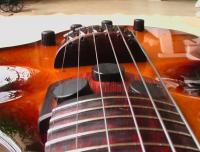
Above: Toga Man Bowed guitar detail with curved bridge
And here is when Jonathan Wilson came up with the dream of having a truly bow-able guitar and he ended up designing his own guitar-formatted bowed string instrument that has captivated the imagination of sonic artists, composers and guitar players around the world and been included even in some movie scores in popular films (300, Clash of the Titans, Day the Earth stood still, True Blood (HBO), CSI Miami (CBS) to name a few).
It has two series of instruments, the electroaccoustic (costing about 5000 dollars) and the accoustic. The second models are closer to a classical instrument (rather similar to the viola da Gamba) and rather much more pricy (around 7500-9000 dollars) but also with the quality sound of a good Viola (and now ask the prices of good classical instruments and you'll even consider it's cheap!)
Jonathan is a micro builder, that creates one of a kind pieces in his studio. Thus if you're thinking to order one consider there´s a time wait of four months up. For sure it will worth. I wish I could afford one at least.. I'd be happily waiting for it! :)
But though it's a bit out of my reach you may consider and find it interesting and you can read more about them at Togaman guitars
Also you can network with the Jonathan self or like her facebook group and connect with other players.
And here you can play some examples
You may need: Adobe Flash Player.
You may need: Adobe Flash Player.

Kabir is a crafter that have been developing the art of Shanti chimes for over two decades.
I have a previous model also crafted by Kabir that were known as "shanti" chimes that are now currently out of stock but were really popular. They were already lovely and heavenly sound. I have in particular the model "echoes of silence" and it delivers a moody eerie haunting combination of notes that I have featured in a few of my new songs.

Above: me with previous Kabir chimes with the model "shanti" chimes!
But now a new generation called Koshi Chimes have arrived
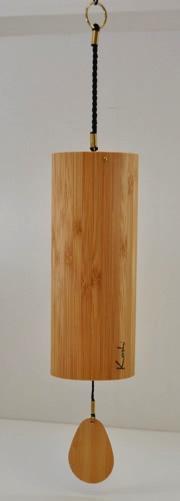
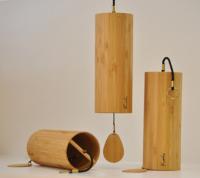
But now the chimes have been renamed as Koshi chimes and have renewed their look being considerably longer than their predecesors , with the clean finish of the bamboo they look more refined and elegant, and the combination of notes have been divided into the four elements Earth, Water, Air and Fire. Below you can listen to some samples, and also see how the sounds mingle together to render an even more outstanding result. I am super happy with my Shanti Chime (a light and portable companion for the stage), but already craving for these. He does assure they sound better, and I only have the previous ones to compare with so I can tell you better has to mean "awesome". Nothing you need to learn to play them, all you have to do move the chime gently holding it by its cord: the crystalline, relaxing sound may leave you in quiet wonder. Outside, as it plays with the wind it will carry you away on an unexpected melody. I've featured mine in a song called "the wind song" and can´t be more fitting, and soothing.
Koshi chimes come in four tunings (click to her MP3 Samples)
And you can purchase them here in KOSHi.FR. You can read their site in English and French
For healing, for meditating, for relaxing, for composing, for chanting... I can´t recommend them enough! If oil protected they can be used also as outdoors wind chimes but I suggest you actively play them, it will render some lovely haunting melodies on their own! Hand made at the foot of the Pyrenees mountains, each chime is the result of meticulous craftsmanship.
Sure we´ve all seen a "Glass harp" which is set up with glasses and cups of wine filled with water so they pitch to different notes and they can be player with your wet fingers. This has been done since the Renaissance times. Have you ever tried it? Probably in a wedding you've seen people doing it for fun! and It does really sound heavently! We´ll make an article about setting up a glass harp in your home with glasses of wine soon, but now we´re about to talk about a haunted (and somehow cursed instrument) called the "Glass arrmonica"
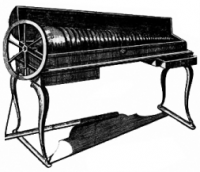
The glass harmonica is an instrument invented by Benjamin Franklin in the XVIII century who using the same principle invented this haunting instrument that consists of a set of glass vases conveniently arranged like a keyboard. Initially Franklin named it the 'glassychord', but soon settled on "armonica" due to the armonious angelic sound of the instrument which became an instant hit. Mozart and Bethoven both composed pieces for this odd instrument that was inded played by some historical characters like George Washington and Marie Antoinette.
You can read a bit of the story of this instrument in the wikipedia entry
Here you can read a pdf with the story of the glass harmonica and also its "cursed" story that made it almost disappear from the concert Halls due to the rumors that said its ghostly tones could cause damage in the nerves of the player. Finally banished the bad reputation and idea that the sound of bowed glass can be unhealthy stays alive as an urban legend even nowadays. In fact there are around a dozen of professional players of the instrument in the world.
There´s been a modern revival of this instrument.Among the contemporary players we have to highlight Thomas Bloch one of the most skilled among the few performers left in the world of this wonderful instrument.
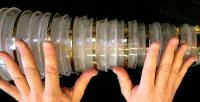
low notes on left and high notes on right like in a piano
The only place i've found where you can purchase a glass harmonica is Finkenbeiner
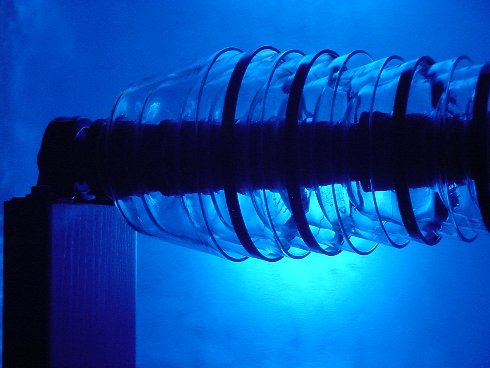
Above: Glass harmonica manufacture at Finkenbeiner´s
Read more about glass armonica story at their site
Here you can see a bit of the story and the instrument in action in a little documentary aired in "The History Channel"
I have myself two bamboo flutes from this maker, they´re really not very expensive and are really rich in tone. I've tried some cheap bansuris in local music stores and they were like crazy out of tune or were way too much hard to blow. I have a G concert pitch (doesn't mean that the others are not in tune but he sells a model concert-pitch if you need to make sure it's 440 and perfectly balanced) and I have also a minor flute (from the exotic scales he also makes). I've successfully recorded both, and they were my first transverse flutes, and first training to learn to blow the flute (coming from a whistle/recorder playing) they were really very good training, but still i'm really hapy with the sound they have themselves.
bamboo flutes and saxes (xaphoon)
also bamboo pennywhistles made of bamboo
He also makes some exotic scales, like minor or oriental... that gives to your easy playing a total different "air"
You will see that our flutes and Bamboo Saxes are finished in different styles: Natural, Starry Night and Dark and Carved.
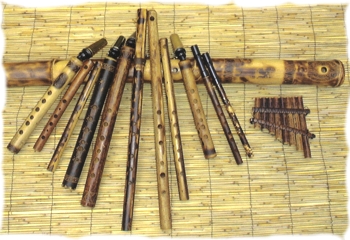
Above: some of the products you'll find in Erik´s store
By the way in this exclusive photoshoot taken by Sebastià Pagarolas and wearing a moth dress designed by El Costurero Real for FAE MAGAZINE autumn 2010 issue I'm playing a bansuri bamboo flute by Erik The Flutemaker.
He also makes double flutes using two whistles (I have like a bit of obsession about double flutes). By the way I shamelessly confess I copy this technique with two whistles myself.. and it worked... though it took me a lot of work!! :) by the way it's the flute that my friend in the picture is holding.
I leave you with his tutorial cos it gives tons of ideas about how this "double whistle work"
The Array Mbira is a glorious hand-crafted custom made modern musical instrument with a harp or bell-like sound. It is made in USA by their inventors Bill Wesley and manufactured by Wesley with Patrick Hadley in San Diego, California, United States. It is based upon the African mbira or thumb piano (also called kalimba or which is native to Zimbabwe but the array mbira is bigger in size and meant to play with all the fingers of your both hands like a "piano". It reminds me very much to the sound of a music box.
You can read the wikipedia article about the array mbira to get an idea about how the notes are arranged
Bill Wesley, musicologist, performer and author, invented and developed the array system, following a logical tone configuration based on the circle of fifths.The Array system of organizing the notes is similar to the system for arranging the buttons of the stradella bass system on an accordion. Here you can download in PDF the array of notes. Octaves are in the same column, and it has a top guide to tell you the notes too, so seems quite gentle for the newcomer.And in the official site they encourage it as very easy to get started with. On their words no other instrument may be learned so easily initially or be subsequently pursued to such an advanced level of performance.
Most of array Mbiras are made to order though you can find some already to ship instrument with a "buy now" buttom. If not available it takes 3 to 4 months for completion. There are models from 3 to 5 octaves.If you want something to custom they're also welcome you to contact them for so. To purchase one visit the Official site here at The Array Mbira
Here you can see "Carol of the Bells" performed by an Array Mbira. Sweet! Don´t you want one? I DO!
Here you can see some offficial uploads into youtube they have as tutorials in their site. they also have some small videos and a DVD to learn to play the Mbira on sale.
As I always say, there´s nothing like the real instrument but on the waiting or while you can´t afford it, there´s a company that has sampled a 5 octave Array Mbira VST (Virtual Instrument) at Soniccouture for 69 Eur. It won't sound the same or look the same on stage but might kill the craving for the instrument till you become able to grab one ! :)
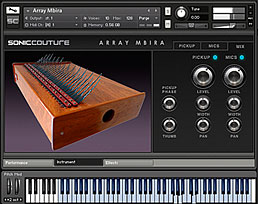
Above:Soniccouture Array Mbira VST
Yes, you've listened to it... but most of you don't know how it's called, or how it looks.
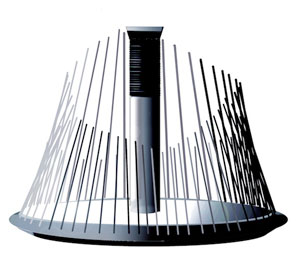
strange isn't it?
I used to be a soundtrack collector and the waterphone eerie spooky haunted moan has always been used in horror and mysterious movie scores... I can recall right now for example "Poltergeist" by Jerry Goldsmith (+). Goldsmith used to include it a lot in moments of suspense and tension.
The Waterphone was invented and is patented by Richard Waters (pat.#3896696). Each instrument is unique and made to order. Richard personally makes, tunes, signs and dates each Waterphone. The sound of the Waterphone has been compared to the haunting melodies of the Humpback Whale and voices from inner/outer space. Waterphones have been described as acoustic synthesizers, Waterharps, a musical “Aladdin's Lamp”, and “Whalephones”. Waterphones are in fact stainless steel and bronze monolithic, one-of-a-kind, acoustic, tonal-friction instruments that utilize water in the interior of their resonators to bend tones and create water echos. In the world family of musical instruments, the Waterphone is between a Tibetian Water Drum, an African Kalimba (thumb piano) and a 16th century Peg or Nail Violin.He custom makes each one using a hot metal process developed over the past 40 years. The tonal rods are tuned to a combination of micro-tonal and diatonic relationships presented in two distinct but intergrated scales having both even and uneven increments.. Read the "history of the waterphone" from its inventor.
Video demonstratoin of the MEGABASS WATERPHONE. I fell in love with the possibilities of sounds it can create with the bow, with mallets or simply rubbing the base of the instrument... It's haunting.
One beautiful way to see all the possibilities this instrument can create is to purchase a CD from Richard´s site (which by the way also list other rare instrumnents he crafts). I have
So I want badly a Waterphone, Richard has a waiting list, my recommendation is IF YOU HAVE THE MONEY, don't trick yourself, go for the REAL THING, there´s nothing like a REAL WATERPHONE, and Richard´s the owner of the patent of the instrument, the other are "imitations". Still the standard waterphone production is discontinued and the basic waterphone now on sale is the megabass that costs around 1500 dollars plus shipping. And he has also two more advanced and expensive models. Does it worth? I tell you if I had the money I wouldn't consider to get anything but an original, after all Richard is the inventor of the instrument and he won't make them forever so they will have in the future an artistic and historical value... but well if you can't wait, let´s´face the fact also that for a real waterphone you'll have to wait quite a while, as each one is handcrafted. Still be in tune for some sales he may have of already to ship or second hands (make sure you're not tricked!!)
So I want badly a Waterphone, Richard usually has a waiting list, and my recommendation is IF YOU HAVE THE MONEY, don't trick yourself, go for the REAL THING, there´s nothing like a REAL WATERPHONE, and Richard´s the owner of the patent of the instrument, the other are "imitations". Still the old Standard waterphone production has been discontinued and the new advanced waterphone now on sale is the Megabass that costs around 1500 dollars plus shipping. And he has also two more smaller and less expensive models. Is it worth it? I tell you if I had the money I wouldn't consider to get anything but an original, after all Richard is the inventor of the instrument and he won't make them forever so they will have in the future an artistic and historical value... but well if you can't wait, let´s´face the fact also that for a real waterphone you may have to wait a while, as each one is handcrafted by Richard. But check him out as he may have one ready to ship or a second hand (make sure you're not tricked!!) as the imitations do not sound nearly as good
There are similar things to the waterphone, one was the Ocean Harp that sells in Lark in the Morning but it´s currently sold out and I ignore when it will be back in stock. Still it was an "inspired by the waterphone" not real waterphone in Ebay you can also find a company that sells two models of an instrument similar to the waterphone called the Aquasonic Standard and Aquasonic supermondo. They're not cheap, but around half of the price of the waterphone. I don't know what to say. Though I'd love to have one of this, I feel it would be like a lovely item while you "wait" for one of Richard´s or if you use it to travel a lot for stage use. Still you can find them here in Ebay.
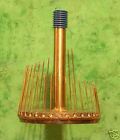
Above: Aquasonic Standard, and Aquasonic supermondo.
It this isn´t an option for you and you happen to be a synthetizer there is one last option which is to purchase the VIRTUAL INSTRUMENT samples. Tonehammer have made this for just 69$ (we´ll be covering VSTs individual entries soon) in a collection called WATER HARP VST. with 2,903 samples and 59 different articulations, divided into two main categories and also the instrument recorded in different ambiences. Of course this is not as cool on stage...!! and waterphones are indeed strange pieces of art, but might do for you, and I think it's the most valuable and cheapest option. Maybe go for this rather than purchasing a fake non tuned waterphone as there are a lot of replicas that are no good.
Richard Waters also recently added a SAMPLER option for Kontakt too in his site called "Uncharted Waters" for only 15$ which by the way helps Richard to keep his site.
But I tell you one thing... one day. I'll have a REAL waterphone!....
I was introduced myself to the sweet sound of ocarinas by my friend Charlie Hind from Hind Ocarinas... He makes ocarinas in wood and since I've developed a love for its sweet mellow sound... Maybe you might be familiar with this instrument with origins in Africa more than 30000 years ago due to the videogame "Legend of Zelda" that made it more popular and demanded.
Today we´re covering another crafter of this wind instrument Song bird Ocarina that makes them in ceramic.
Since 1989, Darryn Songbird has been refining the craft, to create pieces that are visually pleasing, feel good in the hands, rewarding to play, and most importantly, sound exquisite. He has evolved his mouthpiece to convey a wide range of blowing styles, providing a rich tone throughout, from a soft whispery breath to vigorous firey breath. The tuning is precise, and provides for a fully chromatic 12 tone scale.
One of the good things of the company is the affordability of the instruments... also aside of the standard models they have made some models a bit more fantasy oriented
Above: One of the most popular and pretty designs "Dragon Tooth Ocarina" alto 12 hole ocarina with a range C to F
One of the highlights of Songbird ocarina are the lovely ceramic sculpted "Muse" Ocarinas... these ones stand out isn't "she" pretty? In the website you can watch it in ·3D so you can see the sculpture made by artist. The ocarinas have 10 hole (one entire octave+ 4 notes)
You can see how it looks and how it sounds here
The website includes also some song books, and some lovely bags and pouches to carry the ocarinas. They're really cute looking specially this pointy ones
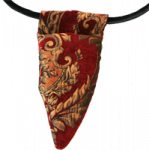
They have also an inexpensive collection of pendant ocarinas, my favourite is this one, because of its "tribal" look. I really like the simplicity of this one shaped like a bone.
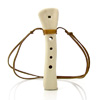
Above: Eagle bone ocarina
For lovers of "Legend of Zelda" they keep a sister site more focused in the love of this videogame called Zelda Ocarina where you can read more about their ocarina crafting.
You can also connect in Songbird Ocarina at FACEBOOK and TWITTER for latest updates on this company.
The kantele is the Finnish version of an instrument known throughout the world as either a zither or lap harp.
The Finnish kantele is basically a triangular shaped sound box with strings running across the top of the instrument. When the strings - usually tuned to a diatonic scale - are plucked, a kantele will produce ringing bell-like tones. It is similar to a harp in some ways, but because of the way in which it is built and the way in which the strings are attached, a compelling and unique sound is produced as it is played.
Kanteles are often divided into two categories: small ones and big ones. Small ones rarely have more than two octaves. The big ones usually have at least 32 strings and three to four octaves. Kanteles, especially the smaller 5 and 10 string instruments, are relatively easy instruments to learn to play. The larger kanteles of up to 36 strings require more effort to learn to play, but allow the player to perform more complex pieces of music.
Baritones are larger mountain or appalachian dulcimers with 29 1/2" scales, typically tuned AEA' or GDG' below a standard dulcimer, with a correspondingly bigger, deeper sound - really majestic on slow tunes, and ballsy like an Irish octave mandolin on flat-picked reels and jigs. A true baritone is not just a standard dulcimer with heavy strings - you really need the longer string length, bigger body, and altered bracing and bridge to optimize the sound. They come in 3, 4, 6, and 8 string varieties, with average dimensions about 2" longer than a standard dulcimer. With a 1 1/2 fret they also have a larger variety of chords for backup work than a typical DAD' instrument. An interesting equidistant 4 or 8 string option is ADAD and variations tuning (from low to high) that gives you more range, mirroring an octave mandolin - a baritone and standard combined in one instrument, with the ability to remove one outside course or the other, if you wish to play only 3 at a time. I can also build DAD' instruments with this scale length for a fuller sound and more sustain.
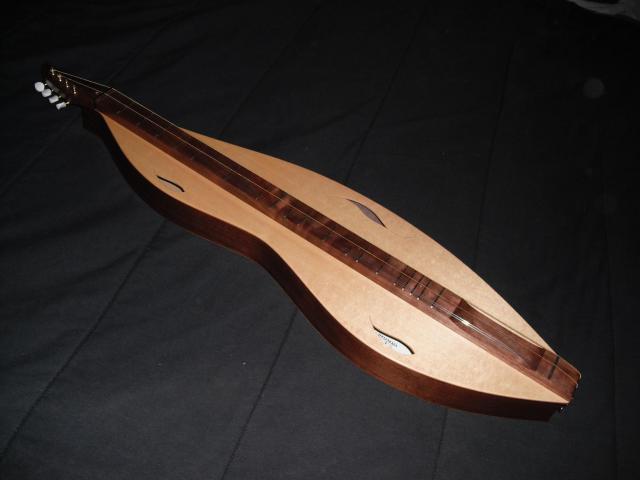
Above: Baritone Dulcimer by our endorser Ron Ewing dulcimers. As you can appreciate, it has some extra frets that are not commonly found in standard mountain dulcimers, Ron installed the half and one and a half fret and this has brought a wealth of new possibilities making it more chromatic.
I'm the happy owner of one Baritone dulcimer myself. Videos and audio samples coming soon, though now I leave you with a video from a more accomplished player than I am or will be for a while.
The Oscar Tribal thunder is a kind of "hank" drum creation from Oscar de Los Santos from Tribal Thunder is easily playable with your fingers/hands or the included mallets for greater volume. Rank beginners will have hours of fun instantly with no noisy learning curve!
This instrument is about 12" across and less than 6" high (weight about 6 pounds), but INCREDIBLY responsive. It is a resonator (no holes or ports, the sounds flows from within), tuned to 6 or 8 notes that sound as clear as a Tibetan Bell or Tingsha - and resonating just as long! You can easily play many multi-tonal sounds by tapping with different pressure, muting, or play full chords by striking more than one tongue! As suitably perfect for meditation as it is for a drum jam...or anywhere you feel like some music - easily played in your lap, on a tabletop or under your arm.
Since these have a relatively small footprint, you could surround yourself in a ring of differently tuned Oscar™ drums, or play with a group - and create your own orchestral soundscape!

Above: Picture of my own Oscar Tribal Thunder drum custom hand painted in purple gradient
My model is in Dminor but it can be done in other scales as well.
I know that many people may end up purchasing a hank drum when they are looking for a HANG (the very exclusive drums designed by Pan Art) They are certainly not the same thing, and that is precisely good. The Oscar has a lovely bell-sound quite distant from the more "caribbean steel drum" type of sound that the hang creates. And they are both amazing as different instruments despite their similar shape. The hang and hank are "companions" and are meant to jam together. And believe me jamming with this lovely oscar drum is soothing and rock! Below you can see me having fun with it! :) (<--proud owner) In my band it is my partner who often jam with it, being in Dminor works great along with someone playing the recorder in C, and the most haunting melodies arises.
I've featured it in several of my upcoming album songs. It really has a soothing relaxing sound and it also makes it a wonderful item for healing and music therapy.


